Among the abundant whites and yellows of early spring a pop of other colours is welcome, and none more than blue. Here the genus Scilla comes into its own, briefly spangling the ground with its six-petalled flowers in shades from glacier- to Prussian blue, varying sometimes to white or pink, occasionally almost mauve. None lasts very long in flower, and most would not draw a crowd, but as highlights in the garden, or as gems in a pot, they are delightful.
The name Scilla has been in use for hundreds of years, originally being applied to the Mediterranean sea squill, now Urginea maritima, a tender, autumn-flowering bulb with long spikes of white flowers, but Carl Linnaeus brought this together with an assortment of smaller, blue-flowered plants more representative of what we call Scilla today. The standard English name is squill, but it’s one that you don’t often hear; most gardeners call them scillas.
Gardeners may be surprised that the plants they’ve always known as Chionodoxa have recently been included in Scilla, but the distinctions were always slight and they hybridise very easily with Scilla bifolia, the type species of the genus, so they have been united with it. Others, more disparate, now appear in segregate genera accepted to varying degrees by botanists; the autumn-flowering native Scilla autumnalis is placed in the genus Prospero, for example, and African former scillas are in Ledebouria and Merwilla.
The plants grown as Scilla today come from a wide a wide swathe of Europe and west Asia from southern Spain to the Caucasian forests in Iran. Some, such as the large Scilla peruviana despite its misleading name, are from the Mediterranean lowlands and like a hot summer. Most of the other species are from alpine or woodland habitats.
The classic species is Scilla siberica, with nodding, rich-blue flowers in March – the name is a little misleading as it comes from no further east than the Caucasus. When happy, it will self-sow to create a great carpet – ideal in thin grass or under deciduous trees and shrubs.
You may also like
- The best garden erythroniums
- How to care for and plant garden corydalis
- Spring bulbs for pollinators
- How to plant camassias
How to grow scilla
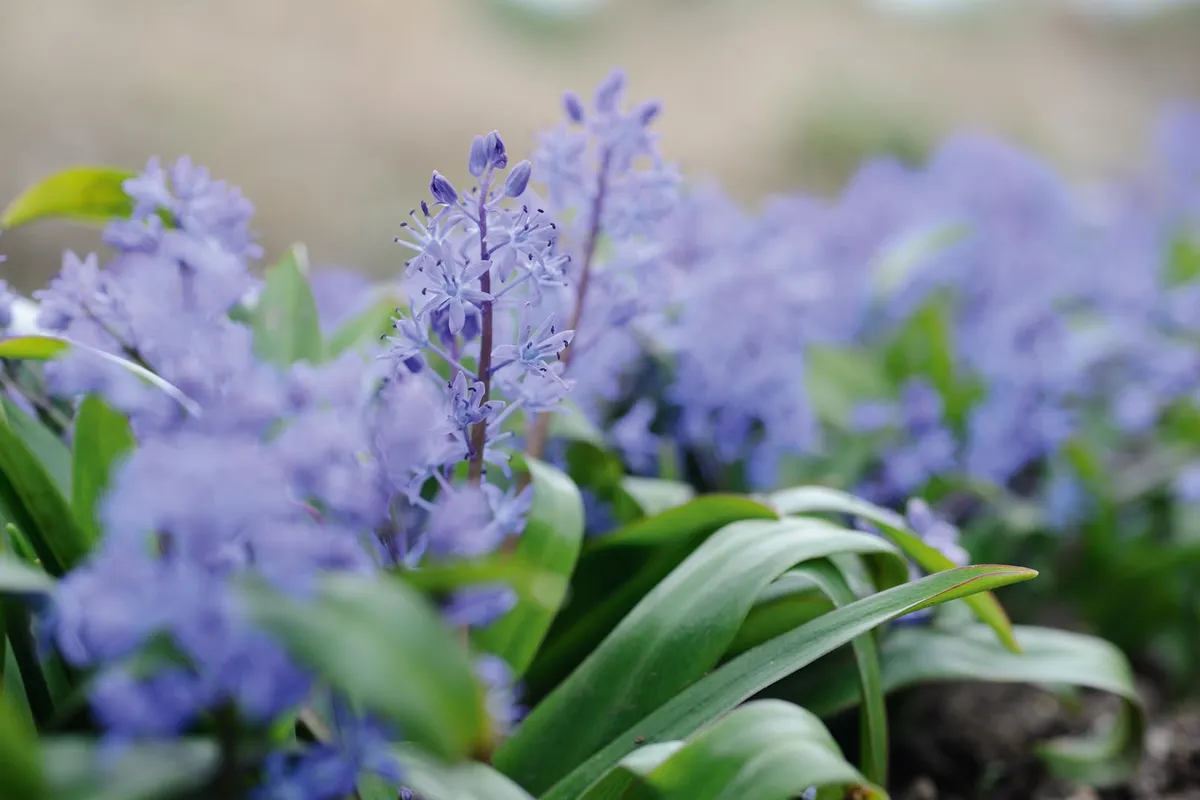
When do scillas flower?
Choosing the species you grow carefully makes it possible to enjoy scillas over a long season, starting with the icy pallor of Scilla mischtschenkoana ‘Tubergeniana’ in February, opening at ground level with Crocus tommasinianus before the stems elongate to their full height of 10cm, and continuing well into May with the upright spikes of Scilla litardierei.
When to plant scilla bulbs
Scilla bulbs should be planted in mid to late autumn. Read our guide on planting bulbs.
Where to grow scilla
As with most bulbs, scillas don’t thrive in heavy clay, or permanently wet places; well-drained soil of any type will suit them well. They should have plenty of light in the growing season, so avoid planting them under evergreen shrubs or evergreen trees.
In the garden, scillas work best when they are allowed to naturalise. For a big, bold effect, some scillas can be planted densely in grass to create a blue river, but I prefer to see them in what Arabella Lennox-Boyd calls 'millefiori' plantings, creating a changing spring carpet of ‘a thousand flowers’ in short grass under shrubs and trees.
In one of my favourite plantings, at Colesbourne Park in Gloucestershire, Scilla luciliae is sprinkled through short grass full of native primroses (Primula vulgaris), wood anemones (Anemone nemorosa) and celandines (Ficaria verna), creating a mesmerising effect for just a few days each spring.
How to plant scilla bulbs
For naturalising, scillas should be planted as generously as possible, flung out to plant where they fall, in hundreds or thousands. Ideally the tip of the bulbs should be about 2.5cm below the surface, but there’s no point in precision with such things.
Scillas have the capability to adjust their depth in the soil by means of contractile roots that pull them deeper if necessary. The next generation of seedlings will suit themselves and flower in three or four years, so the patch should spread quite quickly in good conditions.
How to grow scilla in pots
To really make a show when planting scilla bulbs, pack them densely in the pot as the display will not last long, especially if brought inside. Don’t try forcing them too much; plunge the pots outside and only bring them in when the noses are showing – they will rapidly develop and come into flower with a slight increase in temperature.
Afterwards place them back outside and continue to feed and water them for the rest of the growing season. In a mixed planting, use them as the top layer of the ‘bulb lasagne’ with larger and later-flowering bulbs below. Read more of our advice on planting bulbs in pots.
The best scilla to grow in your garden
Scilla bithynica

Scilla bithynica flowers in March and early April and spreads very rapidly to create a soft-blue wash. Ideal under deciduous trees and shrubs where there is space for it to spread. 15cm. AGM*. RHS H6, USDA 6a-8b†.
Scilla luciliae

In the wild in western Turkey, the starry flowers of Scilla luciliae open in alpine meadows as snow melts, giving it the name 'glory of the snow'. In the garden, it gives a brief, bright pop of blue, close to the ground. 5cm. AGM. RHS H6, USDA 3a-8b.
Scilla bifolia

The widespread Scilla bifolia has tiny, starry flowers in blue, pink or white. It can be enjoyed close up in pots, but is perhaps best planted in large swathes in the garden. It seldom reaches more than 7.5cm but often starts flowering when much shorter. 7.5cm. AGM. RHS H6, USDA 3a-8b.
Scilla peruviana
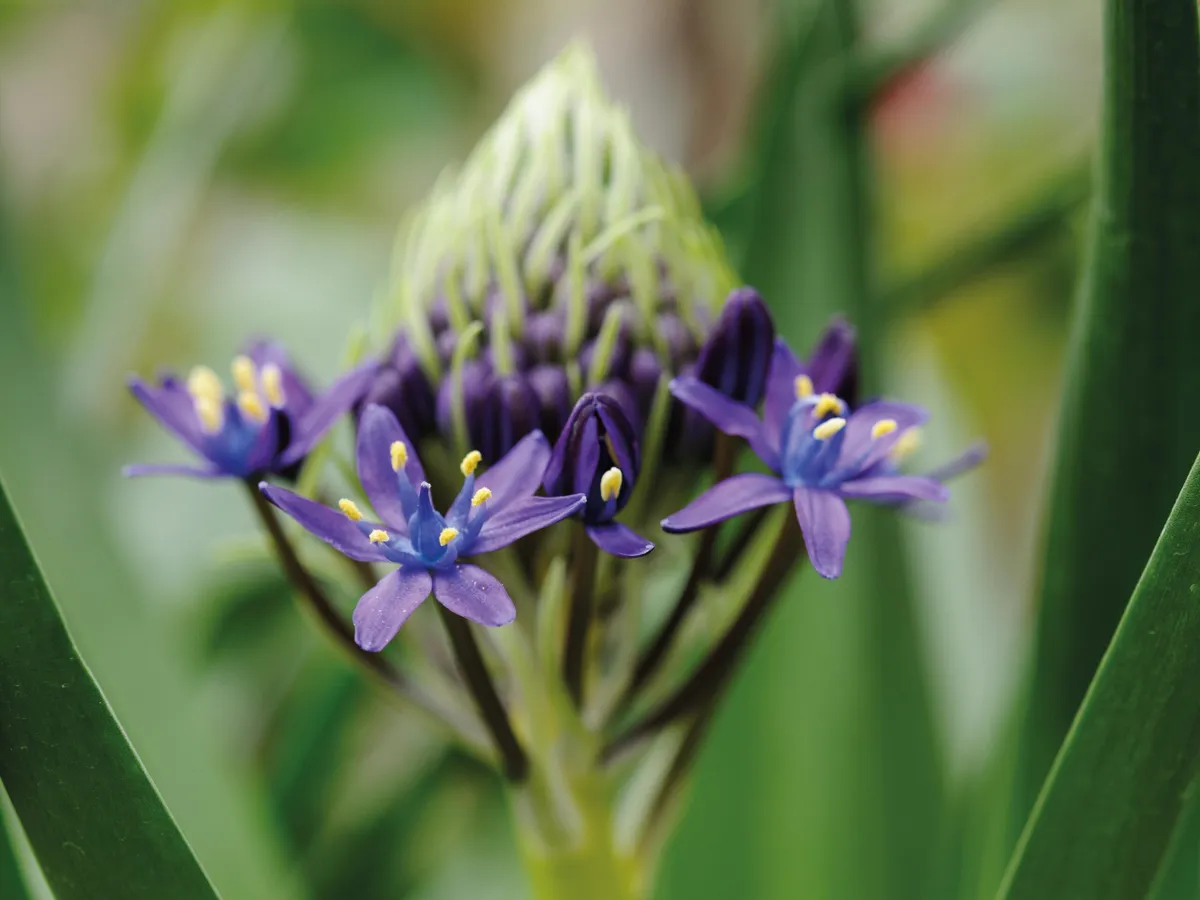
A misunderstanding about its origin led to this handsome Mediterranean plant being named Scilla peruviana. Grow it in full sun in a sheltered place for flowers in late spring and early summer. 20cm. RHS H4.
Scilla sardensis
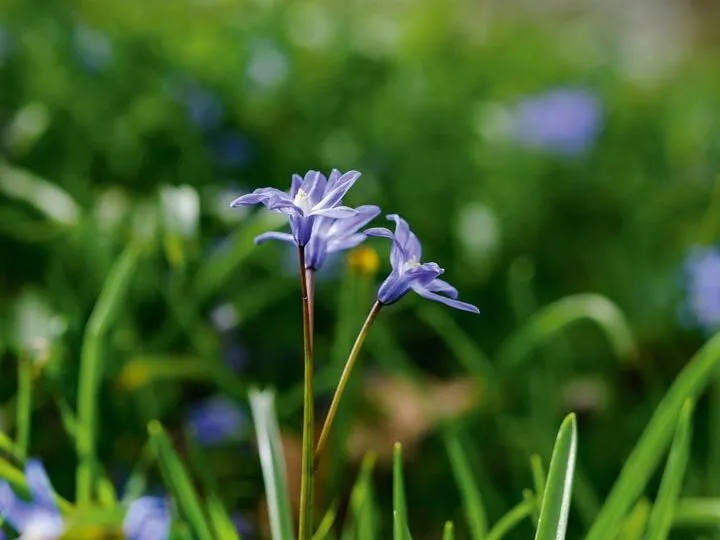
Scilla sardensis from western Turkey has bright-blue, upward-facing flowers with very little white at their centre. Like S. luciliae and S. forbesii, it was once placed in the Chionodoxa genus; all die down quickly. 7cm. AGM. RHS H6.
Scilla x allenii
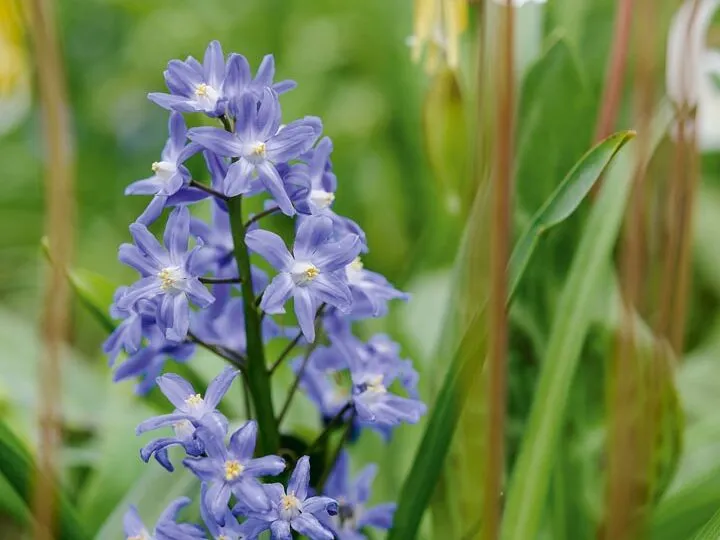
Scilla bifolia often hybridises with the former Chionodoxa species, giving intermediates. Formerly called x Chionoscilla, it is now known as Scilla x allenii. 12.5cm. RHS H6.
Scilla siberica ‘Spring Beauty’
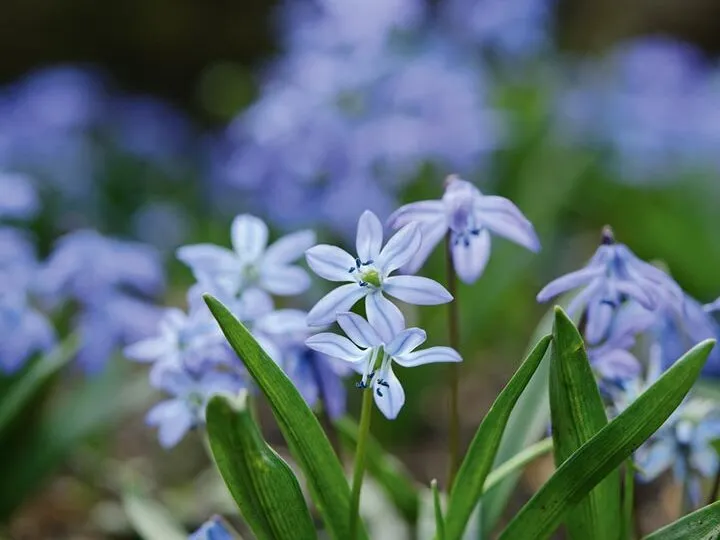
This stocky plant produces several flowering stems with abundant, rich-blue, nodding bells; a good choice for densely planted pots as well as the garden. One of the best. 10-12cm. RHS H6, USDA 2a-8b.
Scilla greilhuberi
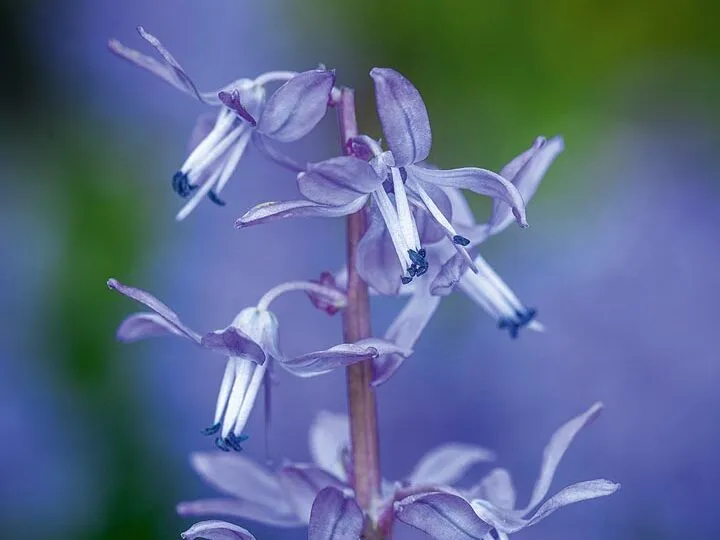
S. greilhuberi comes from the Caspian forests in Iran and prefers slightly shaded conditions and moist soil to support its lush leaves. Taller than most with nodding flowers, it suggests a relaxed bluebell. 20cm. RHS H6.
Scilla mischtschenkoana ‘Tubergeniana’
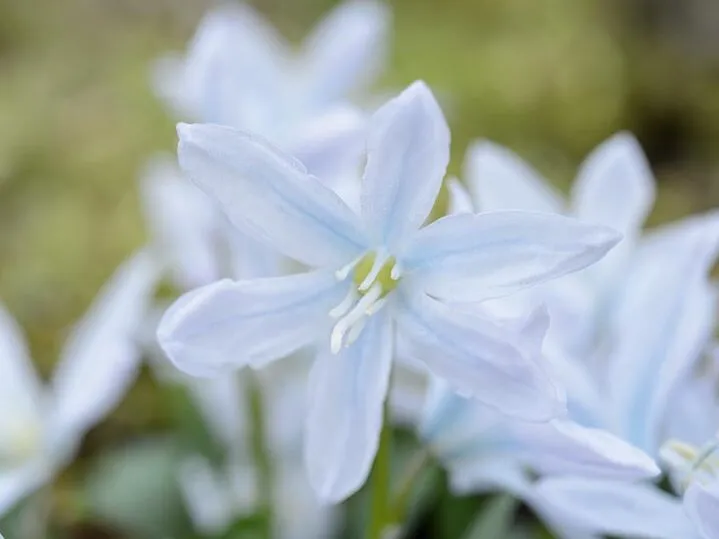
This scilla begins to open its exquisite, glacier-blue flowers at ground level as soon as it emerges in February. Plant in short turf, or enjoy in a pot. 10cm. AGM. RHS H6, USDA 4a-8b.
Scilla ‘Pink Giant’
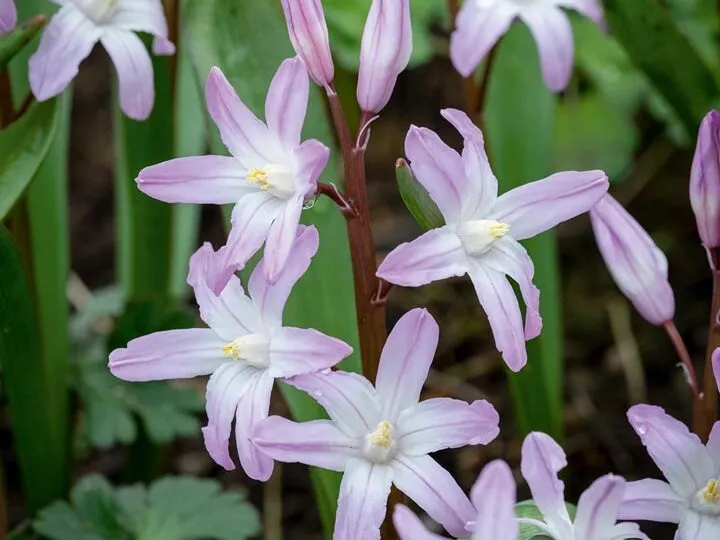
Another former Chionodoxa, this big, bold plant gives a generous show of soft-pink flowers in early April. As it is sterile, it doesn’t produce seed and needs to be multiplied by division. 15cm. RHS H6, USDA 3a-8b.
Scilla lilohyacinthus

Scilla liliohyacinthus has a big bulb with scales like a lily, but small flowers in blue or white produced on erect stems in late April and early May. Its rosettes of glossy, green leaves are very attractive. 25cm. RHS H6, USDA 3a-8b.
Scilla amoena
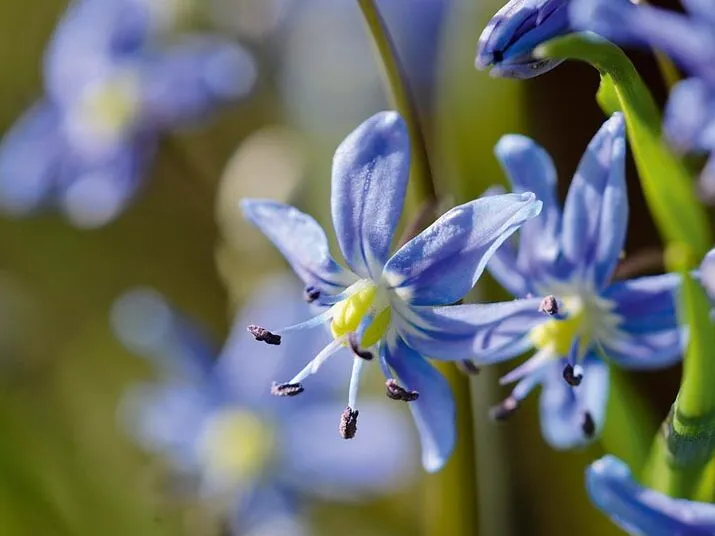
Although it has been cultivated for centuries, the wild habitat of Scilla amoena is unknown. Commonly known as star hyacinth, its strikingly bright-blue, star-shaped flowers appear in April. 10-20cm. RHS H6, USDA 3a-8b.
Scilla forbesii
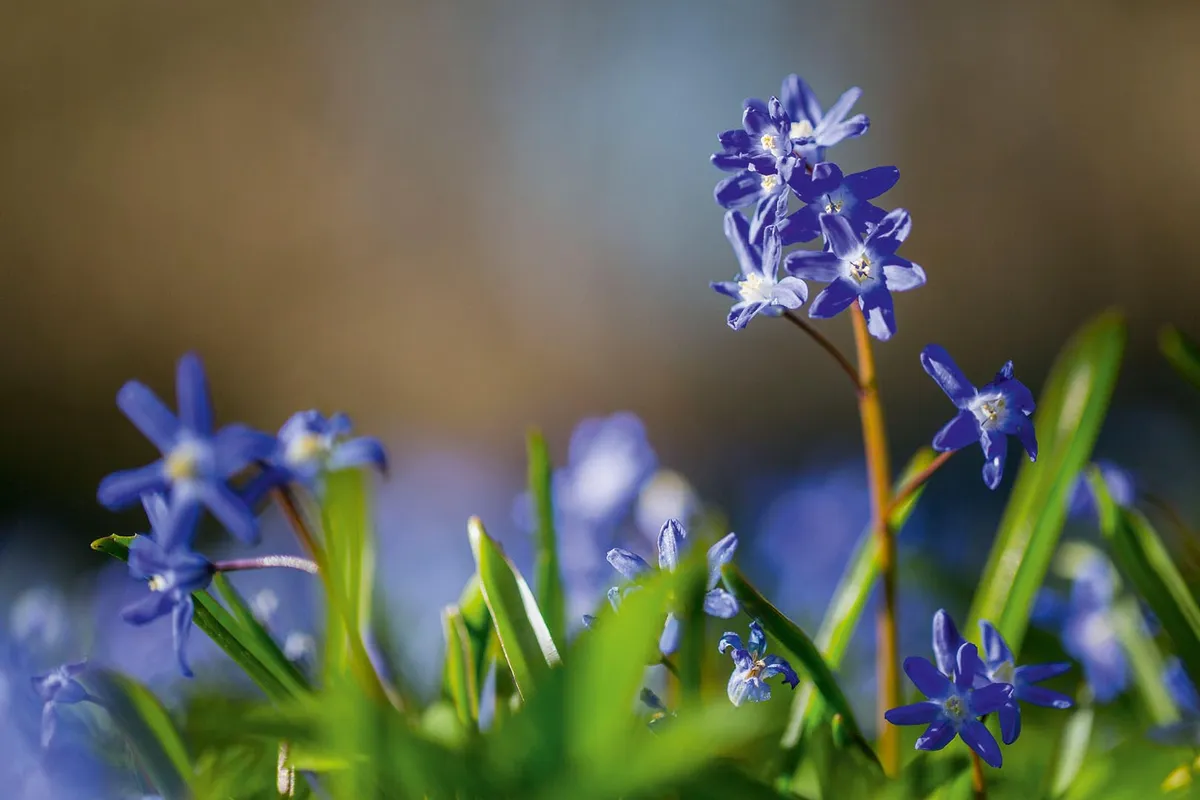
Scatter generously through grass alongside other early flowers to create a millefiori effect through the spring. As with all bulbs, only mow once the foliage has disappeared. 10cm. RHS H6, USDA 3a-8b.
Where to see and buy scilla
• Avon Bulbs, Burnt House Farm, Middle Lambrook, South Petherton, Somerset TA13 5HE. Tel 01460 242177, avonbulbs.co.uk
• Beth Chatto Nurseries, Elmstead Market, Colchester, Essex CO7 7DB. Tel 01206 822007, bethchatto.co.uk
• Cotswold Garden Flowers, Sands Lane, Badsey, Evesham, Worcestershire WR11 7EZ. Tel 01386 422829, cotswoldgardenflowers.co.uk
• Hergest Croft Gardens, Hergest Estate Office, Ridgebourne Road, Kington, Herefordshire HR5 3EG. Tel 01544 230160, hergest.co.uk
• Kevock Garden Plants, Kevock Road, Lasswade, Midlothian EH18 1HX. Tel 0131 454 0660, kevockgarden.co.uk
• P de Jager & Sons, Church Farm, Ulcombe, Maidstone, Kent ME17 1DN. Tel 01622 840229, dejager.co.uk
• RV Roger, The Nurseries, Malton Road, Pickering, North Yorkshire YO18 7JW. Tel 01751 472226, rvroger.co.uk
• Tinnisburn Plants* Upper Millsteads, Canonbie, Dumfriesshire DG14 0RY. Tel 01387 371453, tinnisburn.co.uk *National Collection holder